On the 21 August 2017, members of the ESA CESAR team made an exciting expedition to observe the total solar eclipse, visible this year from the US. The CESAR Expedition team, equipped with 2 telescopes, spectrographs and special cameras, set up camp in Casper, Wyoming and, under a clear sky, captured stunning images of the event that included phenomena such as Baily’s Beads and the Diamond Ring, as well as, the Sun’s corona. The images taken by the team in the US were transmitted as the eclipse took place. A selection of these images are shown below.
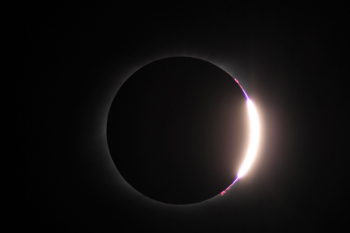 The diamond ring effect: Just before or just after totality a tiny slither of sunlight is visible as well as the chromosphere, the layer above the Sun’s visible surface. The combination resembles a sparkling diamond ring. The diamond ring effect: Just before or just after totality a tiny slither of sunlight is visible as well as the chromosphere, the layer above the Sun’s visible surface. The combination resembles a sparkling diamond ring. |
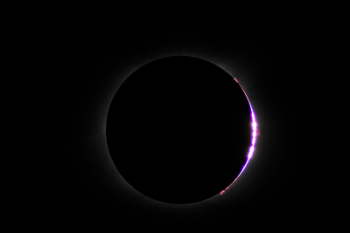 Baily’s Beads: Glimmers or beads of sunlight shine through valleys on the limb of the Moon’s disc moments before or after it fully blocks out the Sun. Baily’s Beads: Glimmers or beads of sunlight shine through valleys on the limb of the Moon’s disc moments before or after it fully blocks out the Sun. |
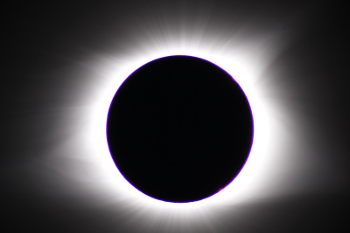 Totality: The few moments when the Moon fully covered the Sun, blocking its light and revealing the corona – the Sun’s atmosphere. Totality: The few moments when the Moon fully covered the Sun, blocking its light and revealing the corona – the Sun’s atmosphere. |
.jpg) Totality: HDR image showing the glory of the corona. Totality: HDR image showing the glory of the corona. |
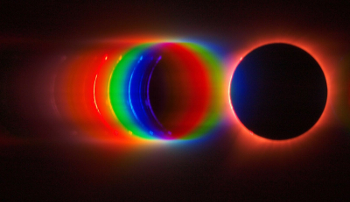 Totality: Image showing spectra of corona with emission lines from various ionized elements. Totality: Image showing spectra of corona with emission lines from various ionized elements. |
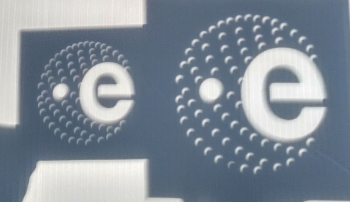 The image shows a projection of multiple partial eclipses through a specially cut mask and onto a piece of white card in the shape of an ESA logo. The image shows a projection of multiple partial eclipses through a specially cut mask and onto a piece of white card in the shape of an ESA logo. |
During the eclipse the CESAR team at ESA ESAC in Spain hosted a Google Hangout to share and explain the events as they unfolded. Solar experts joined the Hangout to present the ESA missions that are observing the Sun from orbit. The CESAR Expedition team, observing the eclipse in the US, also connected to the Hangout to talk about how they were observing the eclipse and give live updates throughout the event.
A total solar eclipse happens at a New Moon when the Moon passes between the Sun and the Earth. However, because the Moon’s orbit around the Earth is slightly tilted compared to the Earth’s orbit around the Sun a total solar eclipse only takes place approximately every 18 months, when the Moon directly lines up between the Earth and the Sun. When this alignment takes place the Moon, for a short time, blocks out light from the Sun casting a shadow on the Earth. Observers located along the narrow path of the Moon’s shadow experience a total solar eclipse. By coincidence the Sun is 400 times larger in diameter than the Moon, and is 400 times further away, meaning that the Earth and the Moon appear to be the same size in the sky.
Watch a replay of the CESAR total solar eclipse Hangout.
View all images of the eclipse from the CESAR Expedition team.
Solar spectacular seen from Earth and space – on ESA website.
Find out when and where you can observe the next eclipse.
Results